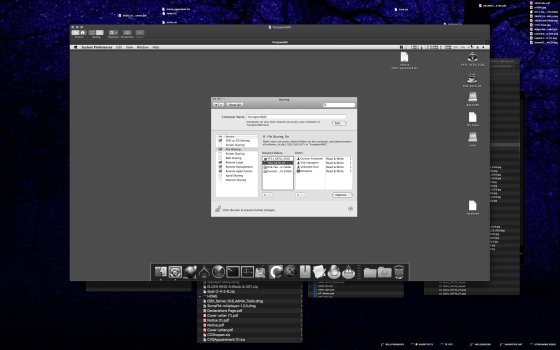Just a sad rant post to reflect on how PowerPC gets harder to use at time goes on...
Finally decided to update my home server from a 2010 Mac Mini to a 2022 M2 Mini. Upgrade was worth it, as I'm also going from HDD to SSD server and the speed is nice.
But now, running MacOS14 Sonoma, I've lost all access AFP and SMB1 – my PPC Macs are basically locked out entirely.
Not that I've been using PPC much lately, but still, this feels like the final nail in the coffin. Any connectivity I had to my modern devices is practically dead now. At least in the past I could still get on the Wifi, access my Server, and watch movies, listen to music, work on text docs and PDFs I put on the Server. Now, it's either USB sticks or nothing.
I still using the monitors/keyboard hardware from the time, perhaps my last link to the PPC days. Otherwise, my oldest working
machine now is probably going to be Early Intel Macs, which works with SMB2. If anyone has workarounds, I'd love to hear them. I have a spare Intel Mac Mini, I don't know if it can somehow bridge my M2's server, but I'm no expert on any of this. (P.S. I don't know anything about FTP and don't really want to go down that path.)
Finally decided to update my home server from a 2010 Mac Mini to a 2022 M2 Mini. Upgrade was worth it, as I'm also going from HDD to SSD server and the speed is nice.
But now, running MacOS14 Sonoma, I've lost all access AFP and SMB1 – my PPC Macs are basically locked out entirely.
Not that I've been using PPC much lately, but still, this feels like the final nail in the coffin. Any connectivity I had to my modern devices is practically dead now. At least in the past I could still get on the Wifi, access my Server, and watch movies, listen to music, work on text docs and PDFs I put on the Server. Now, it's either USB sticks or nothing.
I still using the monitors/keyboard hardware from the time, perhaps my last link to the PPC days. Otherwise, my oldest working
machine now is probably going to be Early Intel Macs, which works with SMB2. If anyone has workarounds, I'd love to hear them. I have a spare Intel Mac Mini, I don't know if it can somehow bridge my M2's server, but I'm no expert on any of this. (P.S. I don't know anything about FTP and don't really want to go down that path.)





